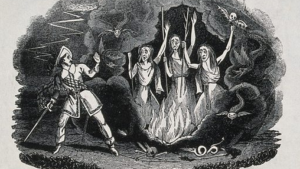Foemina Instrumentum Diaboli can be translated as ‘Women are instruments of the devil’, which sums up the essence of Renaissance witch hunts in Europe. The word ‘witch’ evokes the figure of an elderly woman, dressed in rags, with a cone-shaped black hat on her head, hooked nails, disheveled hair and a large mole on a long pointed nose; a horrible woman to look at, who lives in a hovel, mixes foul-smelling potions in her cauldron and who, whilst grinning, caresses toads, cats and black dogs. One might smile condescendingly at this stereotype, and thus ignore the terrible history of witches. However, in many cultures the belief in the occultic powers of witches is still rife and women accused of performing spells are killed, and one cannot forget the complex and dramatic phenomenon known as the ‘witch hunt’ , which scourged Europe, not even sparing children. Between 1450 and 1750 Europe was the scene of an unprecedented persecution madness: thousands of people were tried for the crime of witchcraft, mostly women, not always elderly, usually widows or single women, without a protector male, most belonging to the lower social classes.
The Pentagon is investigating UFOs that possibly turned off warheads!
Margaret L. King in The Renaissance in Europe (2003) has remarked that during the period between 1480 and 1700 more women were killed for witchcraft than all other crimes combined and nearly 100,000 suspects were brought to trial throughout Europe. Particularly, in Italy the number of death sentences for witchcraft was low compared with that of other European regions; and the highest, about half, were in Germany.
Read more: Ancient Origins
Ask me anything
Explore related questions





